SPECworkstation 3.0.2 Storage Benchmark
SPECworkstation benchmark is an excellent benchmark to test systems using workstation-type workloads. In this test, we only ran the Storage component, which is fifteen separate tests.
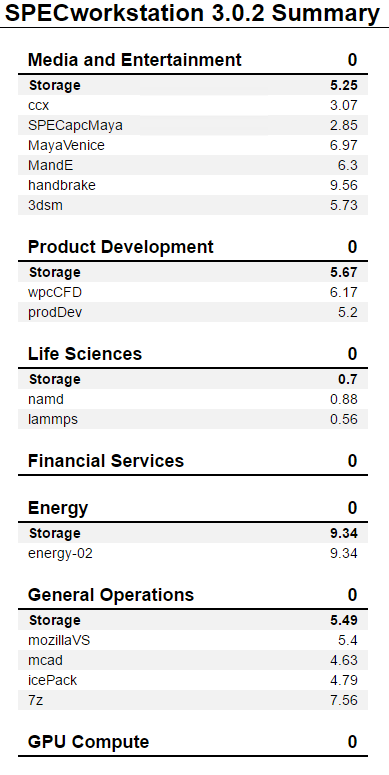
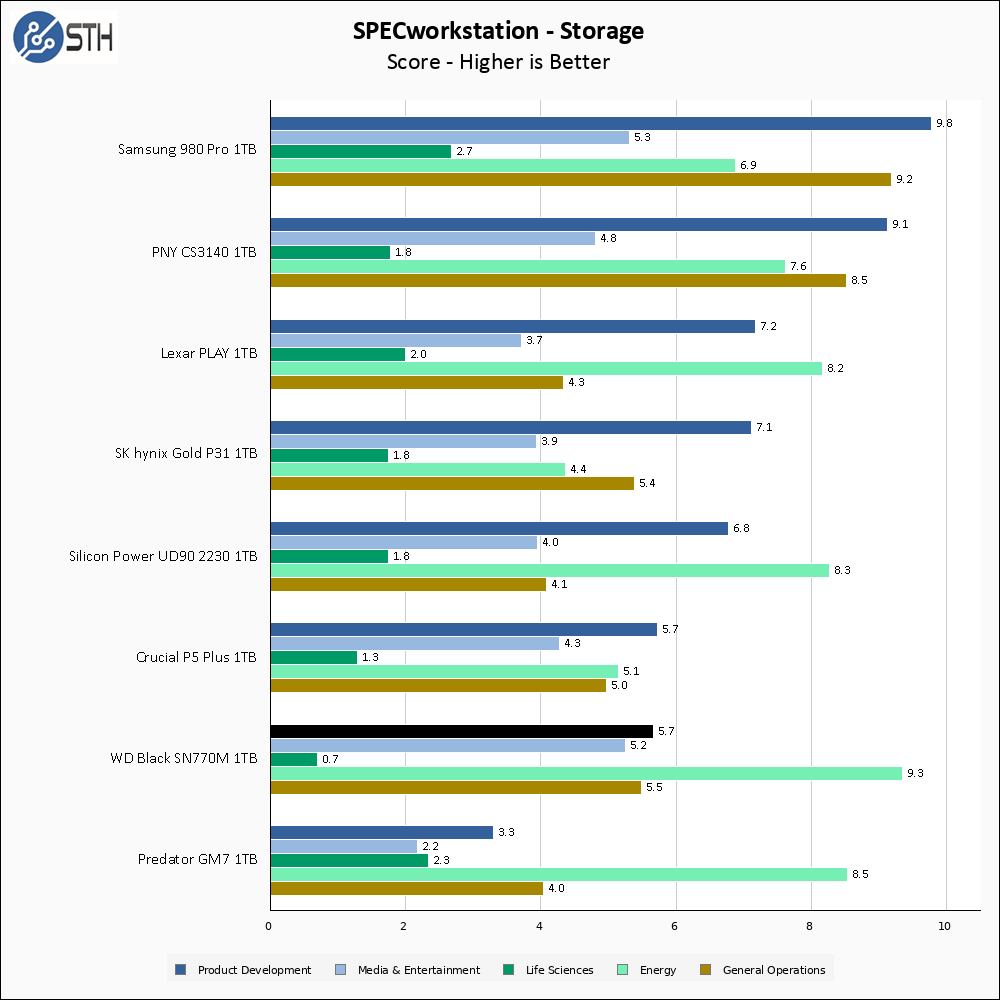
Performance in SPECworkstation for the SN770M is a bit of a mixed bag. Media and Energy results are very strong, General Operations and Product Dev are middling, and Life Sciences is terrible. SPEC performance likely is not what this drive is targeted at, so I am mostly fine with these results.
Sustained Write Performance
This is not necessarily a benchmark so much as trying to catch the post-cache write speed of the drive. While I am filling the drive with data to the 85% mark with ten simultaneous write threads, I monitor the drive for the write performance to dip to the lowest steady point and grab a screenshot.
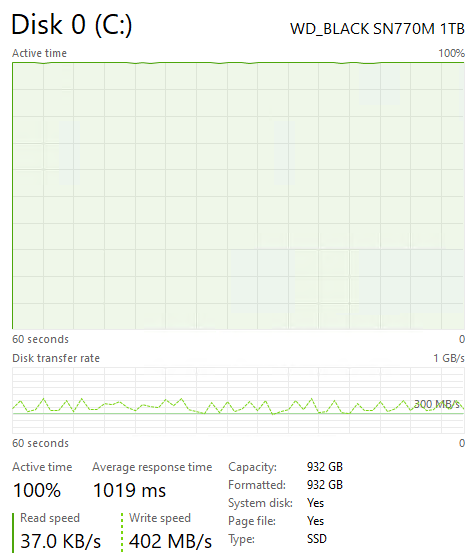
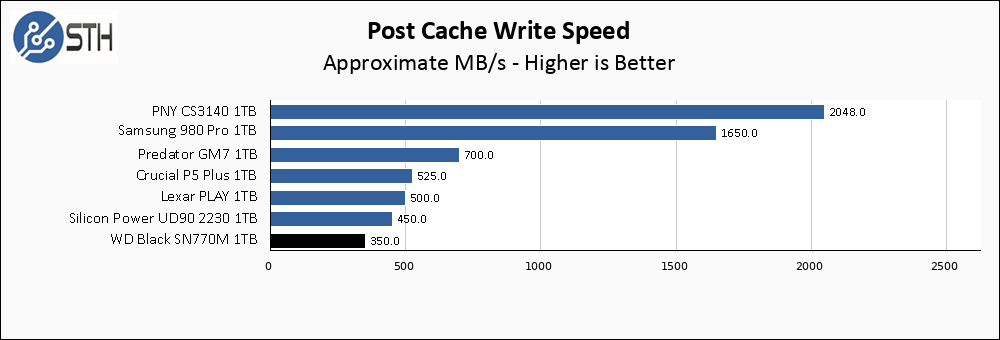
Long term sequential write speed comes in at 350 MB/s. As you can see see on the chart this is not exactly stellar performance. With that said, it is not a catastrophically bad results and if the SN770M is used in a Steam Deck or similar then 350 MB/s is likely an acceptable result.
Temperatures
We monitored the idle and maximum temperature during testing with HWMonitor to get some idea of the thermal performance and requirements of the drive.

The SN770M 1TB can get pretty hot; mine reached 82C. Given that this drive is a 2230-sized drive, I also had to “MacGyver” a cooling solution, but I was able to get it working in one of my heatsinks. All benchmarks were performed with the heatsink mounted to keep temperatures under control. In an average gaming scenario, this drive is unlikely to hit such high temperatures.
Final Words
The WD SN770M 1TB is $110 at the time of this review. When I reviewed the UD90 2230, it was $77 and still is to this day. The Lexar PLAY is $90. $110 for the SN770M is, in my opinion, disproportionately high compared to the competition.
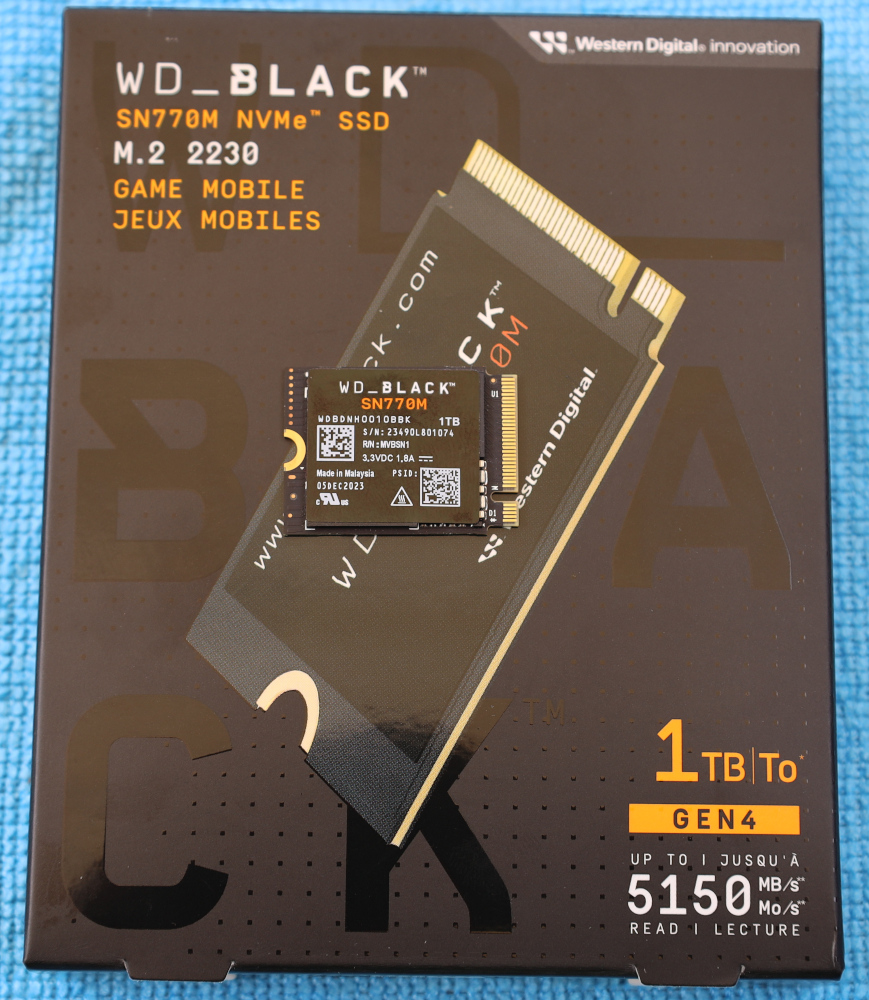
While overall I like the WD Black SN770M, I feel like it has three strikes against it. First is the mismatch between the advertised sequential write performance and the observed write performance. This, to me, is a simple matter of inappropriately set expectations, as the SN770M would have been fine had its rated specifications simply been dialed back a notch. Second, I also observed relatively poor random performance in some of my testing. Low random performance is not a great facet for a drive, but is less important given the target market for the SN770M. Lastly, and most importantly, the price is simply on a different planet than other performance competitive drives. The $110 price point puts the SN770M as the second most expensive 1TB 2230 SSD on Amazon, behind only the Seagate drive. The WD branding and support infrastructure is worth something, but I am not sure it is worth enough to justify that kind of price differential.




Probably the most obvious sign is that it definitely draws more power than the 2269xt based drives. Not great when most times it underperforms them
And it’s precisely those devices it will go into where you want to watch the power draw
In the review it is written “SPEC performance likely is not what this drive is targeted at, so I am mostly fine with these results.” I don’t understand this statement.
If the SSD targets simple synthetic benchmarks but underperforms on tests which mimic real application access patterns, that’s something I would not be fine with. I’d take that as a warning sign.